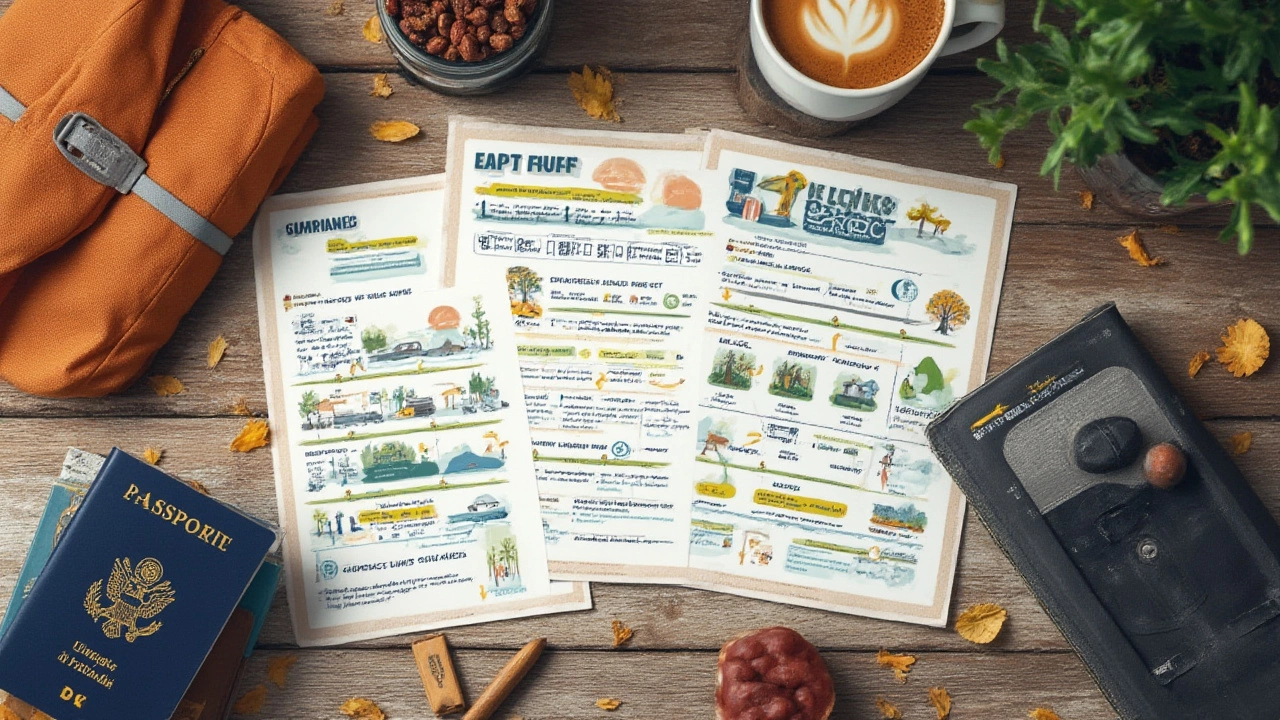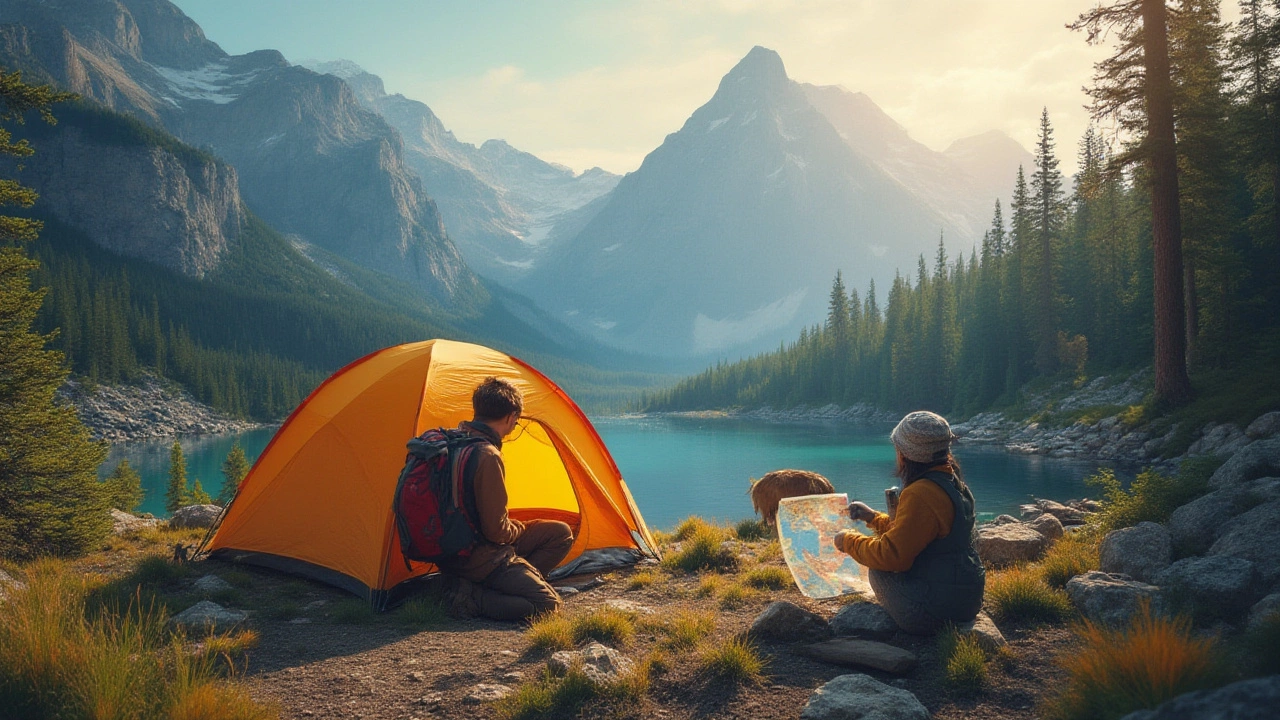Think sleeping under the stars, away from any crowds, means total freedom? Not quite. Wild camping stirs up visions of untouched forests and finding your own private spot, but the rules can be confusing. Depending on where you are in the United States, a peaceful night in your tent can be totally legit or earn you an unexpected visit from park rangers. The simple truth: wild camping isn’t illegal everywhere, but it sure isn’t allowed anywhere you please, either. There’s a whole maze of federal, state, and local rules, and it’s easy to cross the line without even knowing.
Wild Camping: What Does the Law Actually Say?
Right away, it’s important to say—there’s no single law about wild camping in the US. The rules depend on who owns the land and what kind of land it is. Most land in the US falls into three buckets: federally managed (like National Forests, BLM land), state-managed (state parks, wildlife areas), and private property. On federal lands, especially those run by the Bureau of Land Management (BLM) and US Forest Service, something called “dispersed camping” is usually allowed. This lets you camp outside developed campgrounds, sometimes for up to 14 days. National Parks, on the other hand, have much tighter restrictions—most only let you camp in designated sites, and rangers are absolutely serious about this.
Cities and towns usually have their own rules, too. Pitching a tent in the local city park or at the edge of the road can get you into trouble pretty fast. In fact, in some places, police will ask you to move along or even fine you. Some states like Arizona, Utah, and Colorado are known for lots of public land that people use for wild camping. But even here, there are zones where camping isn’t allowed, like areas being restored after wildfires or near certain water sources.
Private land? You’ll absolutely need permission from the owner. Trespassing laws are strict almost everywhere. You don't want to risk a run-in with a rancher or landowner wielding more than just stern words.
Check this out—federal public lands make up about 28% of the US. That sounds like a lot of ground to roam, but most of those lands are in twelve western states, with Nevada, Alaska, and Utah having the most.
| Land Type | Camping Allowed? | Typical Rules |
|---|---|---|
| BLM (Bureau of Land Management) | Usually Yes | Up to 14 days, 200 ft from water, pack out trash |
| US Forest Service | Usually Yes | Balance leave-no-trace, camp away from roads/trails |
| National Parks | Rarely (Only Designated Areas) | Must obtain permit, limited backcountry zones |
| State Parks | Some, not all | Varies, usually in marked campgrounds only |
| Private Land | No (Unless Permitted) | Owner’s permission required |
So yeah, there isn’t a single easy answer, but the freedoms out West are way different from what you’ll find in the Northeast or Midwest, where open public land is rare.
Best Places for Wild Camping: Where Can You Legally Pitch Your Tent?
Take a guess: where do most people get away with wild camping, no questions asked? If you said the western US, you’re right on the money. Western states have millions of acres of national forests and BLM land—some folks even make a lifestyle out of bouncing between these spots. In Montana, Idaho, and California, you’ll find huge zones where “dispersed camping” is practically a lifestyle. In the East, though, this gets harder—private land dominates, and most wild places are fenced or posted.
The trick is knowing exactly wild camping US rules by state. For example, in Colorado, vast swathes of national forest allow you to set up just off the road. Same with parts of Nevada and Arizona, where BLM land stretches for miles and miles, and you can pick a spot so long as you follow basic rules (like staying 200 feet from water and leaving no trace). In Michigan’s Upper Peninsula, there are state forests that permit backcountry camping if you fill out a free permit tag at the trailhead.
- National Forests: Camp almost anywhere, but check local fire rules and closures. Rangers sometimes close areas because of wildlife or forest health.
- BLM Land: Camp at pullouts or clearings, follow posted signs, and always pack out your trash. In summer, fire danger often means fire bans—don’t ignore those.
- Wildlife Management Areas: Some allow camping, some don’t. Double-check their websites or call ahead—these places can be a hidden gem or a dead end for campers.
- State Forests/Parks: The rules vary wildly. In places like Pennsylvania, primitive camping is welcome, but in New York state forests, you may need to stay farther from roads and never near a water source.
There’s a new trend, too—some private landowners now offer dispersed camping for a small fee. Sites like Hipcamp or The Dyrt list these. This is handy when national forests are crowded or when you’re in states without much true public land.
One thing people ask: Can you legally wild camp on beaches? In California, most beaches are off-limits, but Oregon allows camping on much of its coastline, so long as you’re respectful and not near towns or state parks. Texas beaches? Sometimes, but hurricanes and local ordinances make it unpredictable.

What Happens If You Wild Camp Where You Shouldn’t?
So, what’s the worst that could happen if you pitch your tent in the wrong spot? Well, best case, a ranger or sheriff rolls up, asks you to leave, and you’re on your way. No big deal. But in other places, you could get slapped with a fine—or in rare instances, even get your camping gear confiscated along with a date with a judge. Cities, especially, don’t mess around: urban wild camping regularly leads to tickets, and some homeless ordinances mean tougher enforcement even in out-of-the-way corners.
National Parks are strictest. If you try to slip into a closed backcountry zone or sleep in your car at a trailhead, rangers are notorious for handing out citations on the spot. Depending on the park and the season, these fines can run $100 to $500. You can feel especially unlucky if you stumble onto restricted land during a wildfire closure or in areas with endangered species nesting—fines here can be even steeper.
On BLM and National Forest land, enforcement’s a bit more chill. If you break the 14-day rule or camp right at a riverbank, usually a ranger will just tell you to move. But trashing your campsite or having an illegal campfire? Now you’ve got their attention. Wildfires started by careless campers have cost millions in damages—one big wildfire in California’s Yosemite area, traced to an illegal campfire, led to a $60,000 restitution order for the person responsible.
Private land’s the real wild card. Trespassing can mean criminal charges, especially if the owner feels you did harm—breaking fences, cutting trees, hunting without permission. Rural sheriffs in some states have no patience for unauthorized camping. Worst-case horror stories pop up on social media of people waking up to angry property owners—or even law enforcement—demanding immediate exit, sometimes with threats of arrest.
Repeat wild campers often say, as a rule of thumb: if you’re not sure, ask. A quick check with a local ranger station or a few minutes searching a local land use website can save a whole lot of hassle. And whatever you do, respect “no camping” signs. They’re not just for show—violating posted closures is a fast way to get in trouble.
Wild Camping Tips: How to Stay Legal (and Happy)
It’s not impossible to enjoy wild camping in the US; you just need to be smart about it. Start by researching where you’re headed—look up the latest rules for that area, and don’t rely on old blog posts. Rules can change fast after fires, floods, or heavy use. Agencies like the US Forest Service update their websites all the time, and a five-minute phone call to a ranger station can clear up a lot of confusion.
Want to minimize your chances of trouble? Follow these simple habits:
- Camp at least 200 feet from any water source—this helps protect wildlife and prevent pollution.
- Use existing clearings or spots with bare ground. Don’t trample new plants or create new fire rings.
- If you make a fire, always check local restrictions. Summer in the West often means total fire bans—violators get hit with big fines.
- Pack in, pack out—never leave trash, leftover food, or toilet paper behind. Most wild camping bans happen after an area gets trashed by careless visitors.
- Don’t stay longer than the official limit (usually 14 days in one location), and always move at least a mile between sites if you’re region-hopping.
- If heading off the grid in the East, check for private property boundaries—apps like OnXmaps or free state recreation maps are helpful.
- Always have a backup plan—sometimes the place you’ve picked is full, flooded, or suddenly closed. Know where the nearest legal spot is.
- If you encounter others (rangers, landowners), be polite and open about your intentions. A humble attitude has saved more than one wild camper from trouble.
Want even less hassle? Join ranger tours or wilderness groups who know the lay of the land—they’ll often clue you in to hidden gems or places everyone else skips. And last thing: Wild camping is about freedom, but if you want to keep that privilege alive, leave the place looking better than you found it. More closures happen every year after misuse, so campers who do the right thing are helping ensure the next person gets to enjoy it too.
To sum it up—wild camping isn’t illegal across the board, but it does take some research and common sense. The wide-open spaces are there if you know where to look, and a little homework is the key to a hassle-free trip that ends with a story, not a citation. So, where’s your next wild spot?
